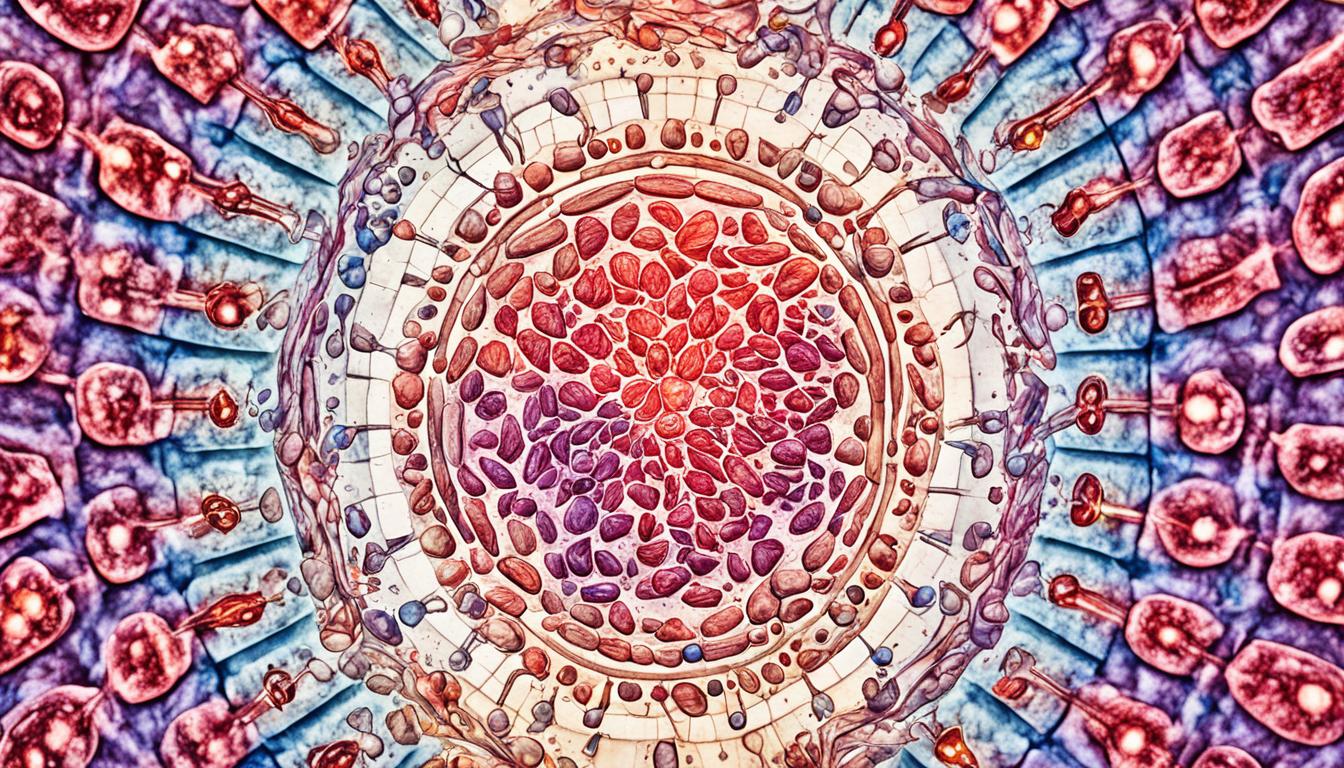Multiple endocrine neoplasia type 2 (MEN 2) is a hereditary condition that affects the endocrine system. It has several subtypes, with MEN 2A being the most common. It features medullary thyroid cancer, pheochromocytoma, and parathyroid tumors. MEN 2B is the rarest and most aggressive subtype. It includes medullary thyroid cancer, pheochromocytoma, mucosal neuromas, and marfanoid habitus. Additionally, there’s a subtype named familial medullary thyroid cancer (FMTC). FMTC shows medullary thyroid cancer only without the other tumors.
Key Takeaways:
- Multiple endocrine neoplasia type 2 (MEN 2) is a hereditary condition that affects the endocrine system.
- MEN 2 has different subtypes, with MEN 2A being the most common and MEN 2B being the rarest and most aggressive.
- MEN 2A is characterized by the presence of medullary thyroid cancer, pheochromocytoma, and parathyroid tumors.
- MEN 2B is characterized by the presence of medullary thyroid cancer, pheochromocytoma, mucosal neuromas, and marfanoid habitus.
- Familial medullary thyroid cancer (FMTC) is a subtype of MEN 2 characterized by the presence of medullary thyroid cancer without other associated tumors.
Knowing about the different types of MEN 2 is important for its correct diagnosis and management. In later parts, we’ll look at the causes and inheritance of MEN 2. We’ll also cover how it’s diagnosed and the treatment options available.
Causes and Inheritance Patterns of MEN 2
MEN 2, short for multiple endocrine neoplasia type 2, runs in families. It’s all about a special gene called RET. Mutations in the RET gene lead to issues in cell signaling and growth.
Mutations in the RET gene can come out of nowhere or from a parent with MEN 2. When it’s inherited, MEN 2 shows up through an autosomal dominant pattern. This means a person with MEN 2 has a 50% chance of passing it on to their kids.
A gene test is the best way to find out if someone has these RET gene mutations. This test is good for anyone at risk of MEN 2.
For those with a family link to MEN 2, getting genetic counseling is smart. It helps in learning about the risk and aids in decision-making for testing and treatment.
Comparison of MEN 2 Subtypes and Inheritance Patterns
| MEN 2 Subtype | Description | Inheritance Pattern |
|---|---|---|
| MEN 2A | Characterized by medullary thyroid cancer, pheochromocytoma, and parathyroid tumors. | Autosomal dominant |
| MEN 2B | Characterized by medullary thyroid cancer, pheochromocytoma, mucosal neuromas, and marfanoid habitus. | Autosomal dominant |
| FMTC | Characterized by medullary thyroid cancer without other associated tumors. | Autosomal dominant |
Diagnosis and Treatment of MEN 2
Diagnosing MEN 2 takes a detailed look that includes clinical exams, genetic tests, and tumor screenings. Certain tumors, like medullary thyroid cancer, pheochromocytoma, and parathyroid tumors, suggest MEN 2. Getting tested for RET gene mutations is key, especially if you have a family history of MEN 2 or medullary thyroid cancer. These mutations are usually present in most MEN 2 families, making genetic testing an important step.
Looking out for these tumors early is critical. Tests like neck ultrasounds and blood work can catch these cancers and tumors before they spread. Surgery is the main way to treat them. The goal is to fully remove the tumors and prevent more health issues.
New treatments are changing the way we approach MEN 2. Drugs that target the faulty RET genes are showing good signs in treating these cancers. Stem cell research also holds promise, especially for advanced or recurring cases of MEN 2.

